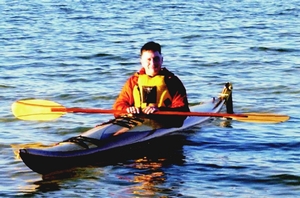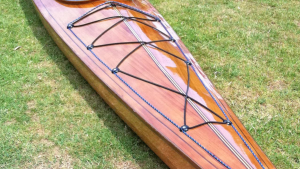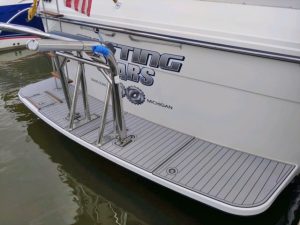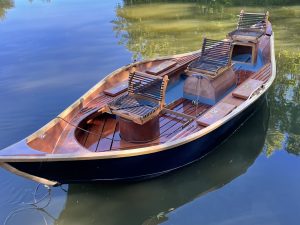
By Jason Havel
I am a Captain in the Air Force and was stationed in Wichita, Kansas, in October 2002 when I purchased a book about building a strip kayak. After the first chapter, I was sold. I ordered the full-size plans for the Guillemot kayak. While on vacation in Texas, I spent about $300 on the western red cedar, purpleheart, and yellow heart, then discovered I was to deploy to Saudi Arabia. In the evenings prior to the deployment, I machined the cedar into ¼” strips and put the bead and cove on them using a router table. It was during the process of setting up my table saw that I realized how clear D-grade pine can be. I accidentally bought a few long boards of it to build an extra-long table saw fence for ripping the cedar.
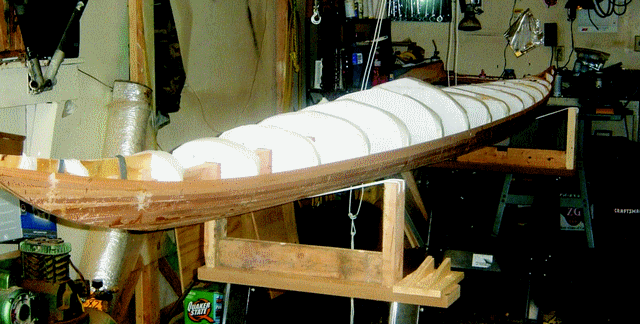
I was amazed at how little grain was visible. That’s where the idea of the lighter-colored deck came from. I got 6 or 8 strips on the mold before I left for my deployment. While I was gone, the confrontation with Iraq began. What was supposed to be 3 months turned into 5 months. The air war ended and I came home and was informed I would be moving from Wichita, Kansas, to Altus AFB, Oklahoma. I knew it was only 300 miles, but I wasn’t about to bring a couple of hundred strips of cedar and an unfinished boat along for the trip. I spent every spare moment finishing the boat. I finished stripping in June, laid the fiberglass in July, and moved in August.
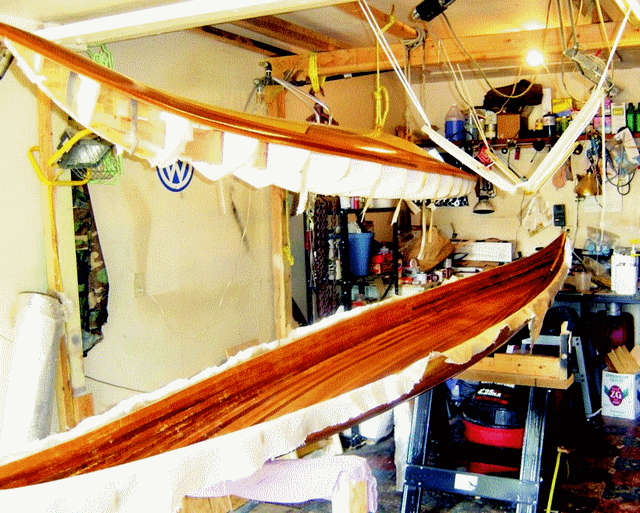
I used 6 oz cloth with 105 Resin/207 Special Clear Hardener and was very impressed. Since July in Kansas is typically over 100°F, I was a little hesitant pouring epoxy. When I did all the epoxy work, it was 108° to 112°F. I could thoroughly mix the epoxy, lay it down, brush or squeegee it out, and make it look perfect. Ten minutes later, it started to harden. There were no issues with sheeting or running. In fact, I never saw any anime blush and had zero bubbles. Believe me, I looked for amine blush since every piece of the literature mentions it. After an hour or two, I brushed on the next coat to fill the weave and add a nice smooth surface for the varnish. Since the epoxy wasn’t fully cured, I got an excellent chemical bond. I can’t say enough about how great the 207 Hardener worked at over 100°F. I coated everything with epoxy, including the deck fittings, before I fastened them to the deck. I sanded the hull with 150-grit sandpaper on a random orbital sander and finished it off with five coats of Z-Spar™ Captains Varnish. Z-Spar also works great at 100+ degrees.
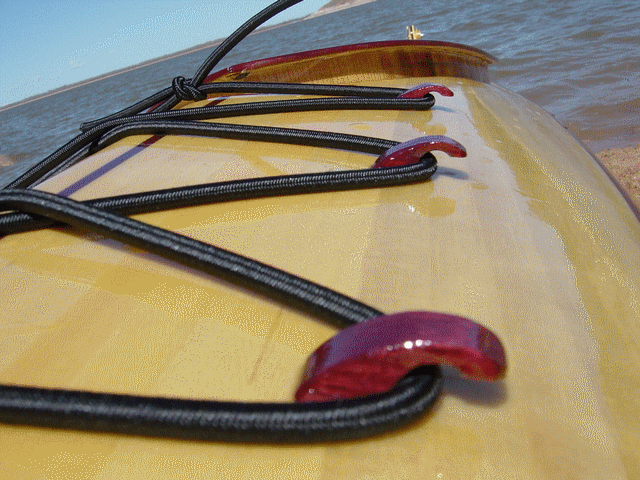
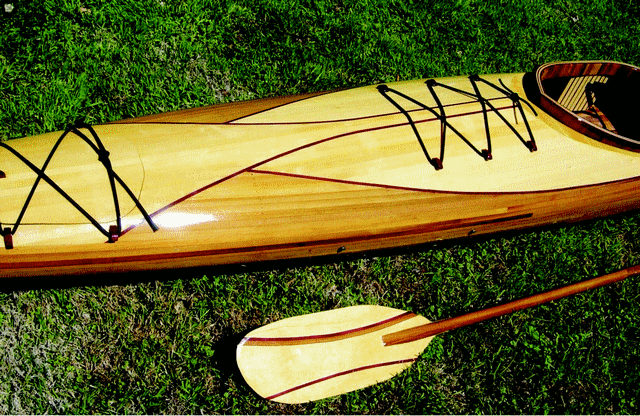
I’d do it again in an instant but next time it will be a canoe since my family will soon be a total of four plus our dog. Even though the kids will be small, it’s tough to stuff them and my wife in a single place kayak and expect to get anywhere.

